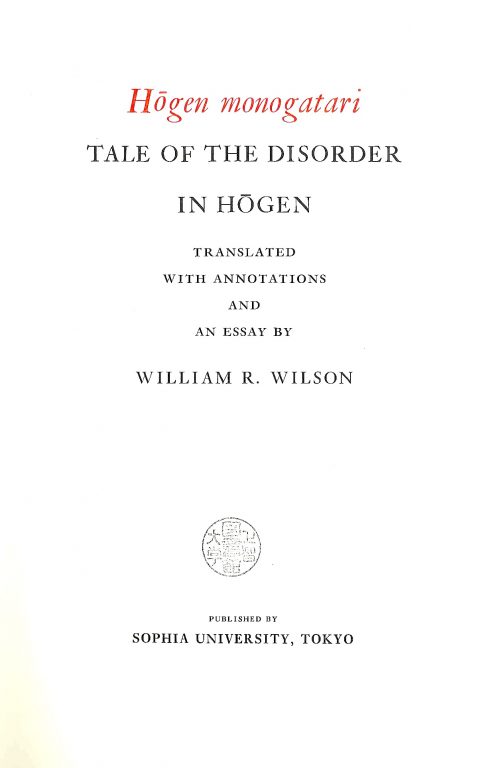Hōgen monogatari: Tale of the Disorder in HōgenTranslated by William Ritchie Wilson
Monographs (1971) pp. 1–176
The warrior class in Japan established its dominance in society in the Middle Ages, and sustained this status until modern times. the imperial institution and its administrators, the Court Nobility, were left in an inferior position after a sequence of rebellion, rising, war, and rising, occurring respectively in 1156, 1160, 1180-5, and 1221. Each of these was celebrated in a new form of literature, the gunki or ‘military chronicle’, distinctive of the period, and these accounts developed through many variants in the next four hundred years. These are the ‘Early Period’ military chronicles, probably originally written to be read, but in later adaptation for chanting to the accompaniment of a lute differences in the tastes of chanters and audiences had a great deal to do with the development of variant versions. Other military chronicles came later and developed differently, but all were crystallized into form by the end of the sixteenth century. The present work is concerned with the final popular version, the Rufubon, of the military chronicle of the chronologically first of the above-mentioned conflicts, the Hōgen monogatari, taking its name from the Hōgen era (1156-9). A translation will be presented, with notes, accompanied by an essay in which the context and content of this account will be discussed in association with translated extracts of other related works in the appendixes hereto.
1971. ix + 176 pages.
Hardback. [Out of print]
